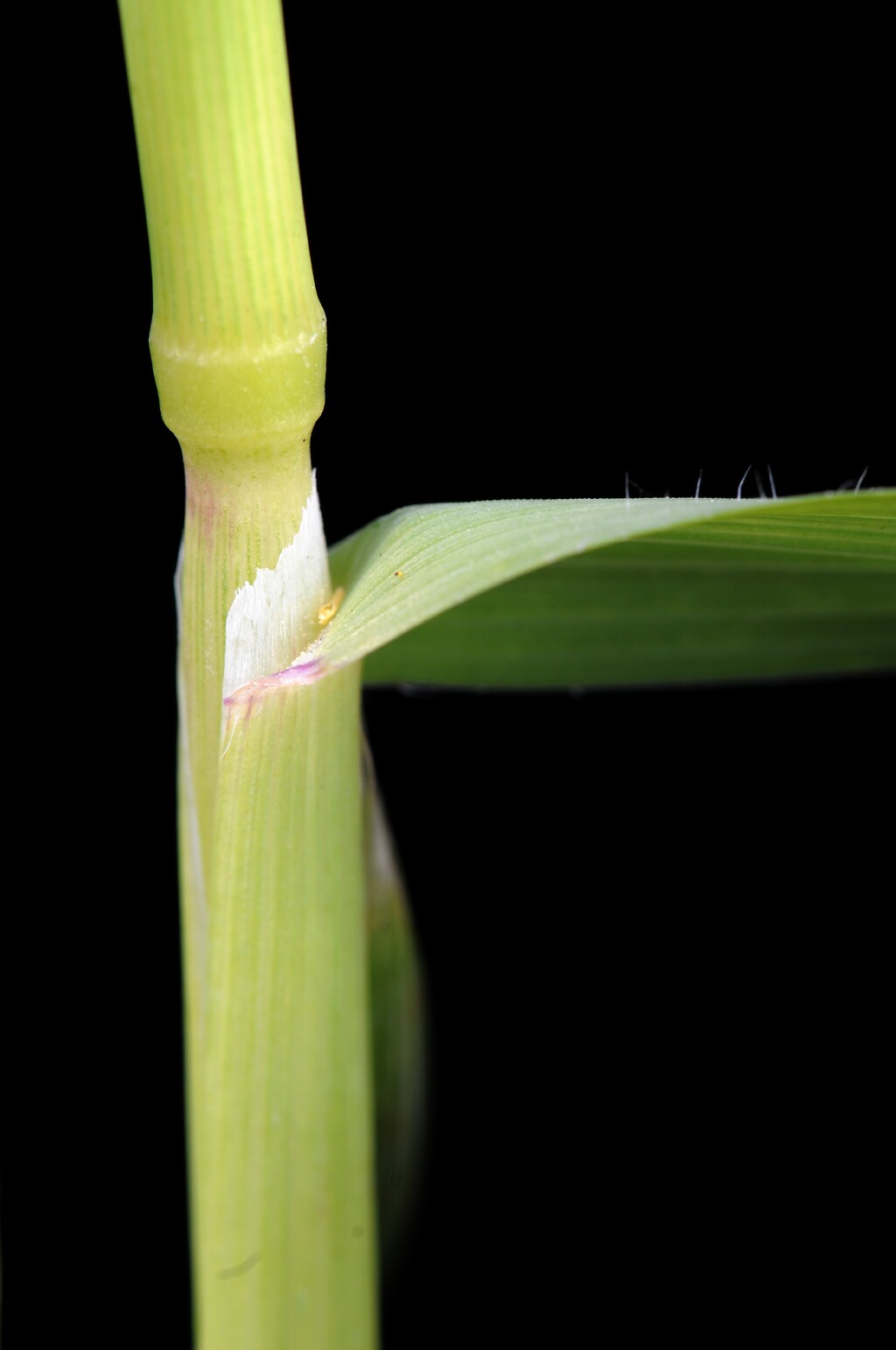Avena sativa
L. OatCulms erect, to 160 cm high. Leaves glabrous; blade finely scabrous, to 45 cm long and 25 mm wide; ligule membranous, to 5 mm long. Inflorescence a rather narrow but open panicle to 30 cm long. Spikelets 2-flowered; glumes lanceolate, 20–30 mm long, 7–11-nerved; lemma lanceolate, 16–25 mm long (including the 2–4 apical teeth c. 0.5 mm long), glabrous except for callus hairs; awn 15–20 mm long, nearly straight, without well-defined column, usually present on lower floret only but occasionally absent or rarely-present on both florets, inserted below midway on lemma; palea slightly shorter than lemma. Florets falling united at maturity. Flowers Sep.–May.
LoM, MuM, Wim, GleP, VVP, VRiv, RobP, MuF, GipP, OtP, WaP, Gold, CVU, GGr, DunT, NIS, EGL, EGU, HSF, HNF, OtR, Strz, MonT, VAlp. Naturalised in all states. Mostly in northern and western Victoria where appearing from dropped grain near stockfeed areas, roadsides, cultivated fields etc, but seldom persisting for more than a couple of seasons.
Probably of cultivated origin in the Mediterranean region and derived from A. fatua. Cultivated as a cereal or fodder grass throughout much of the world.
Walsh, N.G. (1994). Poaceae. In: Walsh, N.G.; Entwisle, T.J., Flora of Victoria Vol. 2, Ferns and Allied Plants, Conifers and Monocotyledons, pp. 356–627. Inkata Press, Melbourne.
 Spinning
Spinning




